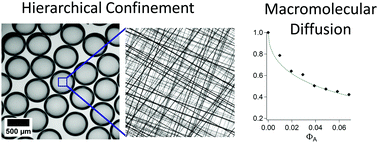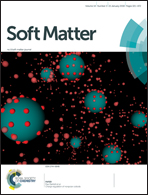Realization of a stable, monodisperse water-in-oil droplet system with micro-scale and nano-scale confinement for tandem microscopy and diffusion NMR studies
Abstract
In this work we generate stable and monodisperse water-in-oil emulsions using a co-flowing geometry that produced droplet sizes between 13 μm and 250 μm. The drops survived transfer to NMR tubes and were stable for at least 26 hours, enabling the performance of pulsed-field-gradient NMR experiments in addition to microscopy. The drops sizes achieved as a function of flow rate agree well with a simple model for droplet generation: this yields a precise measure of the interfacial tension. The design of a cell mimetic environment with nano-scale confinement has also been demonstrated with diffusion measurements on macromolecules (PEG and Ficoll70) within droplets that are further structured internally using agarose gel networks. Containing the agarose gel in droplets appears to provide very reproducible and homogeneous network environments, enabling quantitative agreement of Ficoll70 dynamics with a theoretical model, with no fit parameters, and, with PEG, yielding a systematic polymer-size dependent slowing down in the network. This is in contrast with bulk agarose, where identical macromolecular diffusion measurements indicate the presence of heterogeneities with water pockets.



 Please wait while we load your content...
Please wait while we load your content...